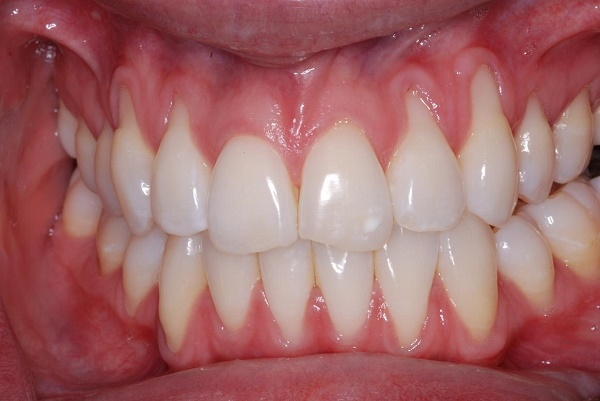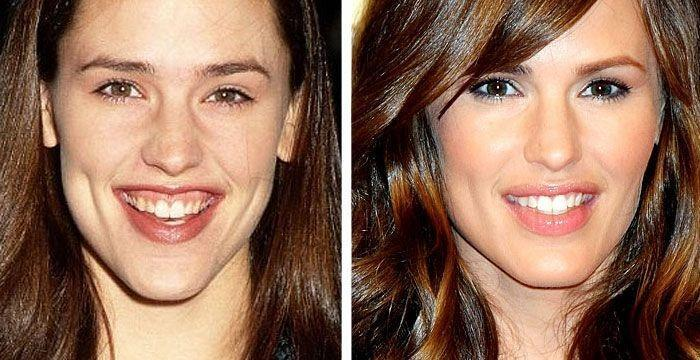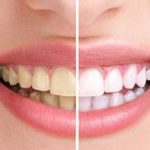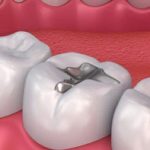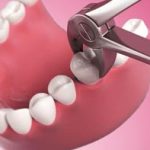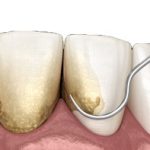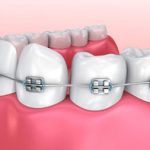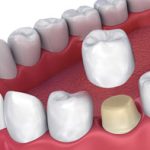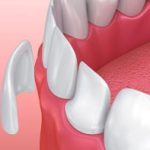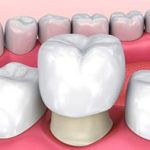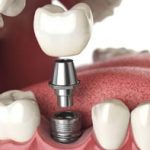GUM LIFT
What is gum contouring?
Gum contouring (also called gum reshaping) is a procedure that dental providers (usually periodontists) use to change the appearance of your gums. Some people have a “gummy smile” that makes their teeth look short or boxy. Others have an uneven gum line that’s too high in some places and too low in others. Gum contouring removes excess gum tissue to make your smile look more uniform.
Conditions treated with gum contouring
Cosmetic gum contouring might be right for you if you have:
- Excessive gingival display (a “gummy smile”).
- An uneven gum line.
- Gum overgrowth from wearing braces.
What happens before gum contouring?
- Before your gum contouring procedure, a dental provider (usually a dentist or periodontist) will meet with you to discuss your cosmetic goals. They’ll ask what you like about your smile, and what you’d like to improve. They may even take photographs of your smile so you can come up with a treatment plan together.
- During your initial consultation, your provider will do a dental exam. It’s important to be in good oral health before having a gum contouring procedure. So, they’ll make sure you don’t have cavities, gum disease or other oral health conditions that need treatment first.
- Next, your provider will look at your gum-to-tooth ratio to determine how much tissue they’ll need to remove. They’ll also consider factors like lip position, tooth wear and your facial bone structure to achieve the right symmetry and balance.
- Finally, your provider will check the bone levels around each tooth. If you have too much bone around your teeth, they may need to remove a very small amount. Without this step, your gums may grow back to where they were before the procedure. Your dentist or periodontist can tell you if this step pertains to you.
What happens during gum contouring?
- Before beginning surgery, your dentist or periodontist will give you local anesthesia to numb your gums. Many providers also offer sedation dentistry options to keep you comfortable. If you’re interested in sedation, be sure to discuss this with your provider during your initial consultation. You’ll need to arrange for a trusted friend or family member to drive you to and from your appointment.
- Once you’re comfortable, your provider will:
- Use a special pen to mark the location of your new gum line.
- Remove excess gum tissue using either a scalpel (traditional gum contouring) or handheld laser (laser gum contouring).
- Remove very small amounts of bone around each tooth, if necessary. (Not everyone needs this step; it depends on your unique tooth anatomy.)
- Reshape your remaining gum tissue to give you a more balanced, uniform look.
- Use sutures to slow bleeding, if necessary.
- Gum contouring surgery takes one to two hours, on average. Procedure length depends on a few factors, including how many teeth need treatment and whether you receive sedation.
What are the benefits of gum contouring?
Cosmetic gum reshaping can:
- Make your smile more uniform.
- Make your teeth more proportional to the rest of your smile.
- Make small, boxy teeth larger.
- Eliminate extra gum tissue that covers your teeth.
- Bring balance and symmetry to an uneven gum line.
What are the risks or complications of gum contouring?
There are risks with any type of surgery. Gum contouring side effects are rare, but may include:
- Infection.
- Relapse (regrowth) of gum tissue. (Removing small amounts of bone around your teeth will help reduce your risk of gum regrowth.)
It’s also important to know that you might need additional treatments to achieve the results you want. These treatments might include:
- Additional gum contouring procedures.
- Dental work like crowns, veneers or Botox® (to treat a “short lip”).
What happens after gum contouring?
It takes a couple of hours for the numbness from the anesthesia to wear off. Once it does, you’ll probably have mild soreness. You can take over-the-counter (OTC) pain medications to ease any discomfort.
If you had sedation, your driver should take you home right after the procedure. You’ll be groggy, so you should rest as much as possible and avoid driving for the remainder of the day.
How long does it take to recover after gum contouring?
Gum contouring healing takes one week or less for most people. Your recovery timeline depends on several factors, including how many teeth need treatment and your body’s own healing capacity. Your provider can tell you what to expect in your case.
Depending on your situation, you might need additional treatments to achieve the desired results. In most cases, you’ll need to wait about eight to 12 weeks before your provider can determine whether you need another procedure.
Gum contouring recovery tips
To give yourself the best chance of a speedy, comfortable recovery:
- Take medication as directed. It’s normal to have some soreness after gum contouring. But you shouldn’t have severe pain. To ease discomfort, take over-the-counter (OTC) pain relievers like acetaminophen (Tylenol®) or ibuprofen (Advil®). Your provider may also prescribe antibiotics to reduce your risk of infection.
- Avoid exercise or heavy lifting. Getting your heart rate up can increase bleeding, swelling and pain. Skip the gym for the first five days and reintroduce these routines slowly.
- Keep the surgical area clean. Reducing bacteria in your mouth helps speed recovery and reduce your risk of infection. Your provider can give you detailed instructions on how to brush and floss your teeth after gum contouring. They may also recommend an antibacterial mouthwash.
- Eat soft foods. Examples include eggs, yogurt, pasta, cooked vegetables and smoothies. Eating these foods for the first few days gives your gums time to heal. Avoid hard, crunchy or spicy foods for about one week.
When can I go back to work or school?
Most people can return to work, school and other routine activities after one to two days. Your gums will likely need a week to fully heal, so take it easy and listen to your body.
What causes this problem?
Most people simply develop a gummy smile as their adult teeth grow in.
Though not as common, excessive gum growth may also be caused by some medications and health conditions. This type of gum overgrowth is also called gum enlargement or gingival hyperplasia, depending on the underlying cause.
If you have gum overgrowth rather than a natural gummy smile, a gum lift becomes a treatment rather than a cosmetic procedure.
It’s important to treat gum overgrowth to maintain healthy gums. In fact, we performed gum lifts to treat gum disease for years before it became a popular cosmetic procedure.
Gum Lift Cost in Iran
The cost of gingivectomy can vary greatly from one country to another. In the United States of America, a gum lift can cost you from $200 to $400 per tooth. In Australia, it can cost from $150 to $350 per tooth.
If you would like to have a cheap gum lift, there are other countries that offer lower gum lift prices. In Iran and Turkey, you can expect gum lift prices to start from $30 per tooth.


